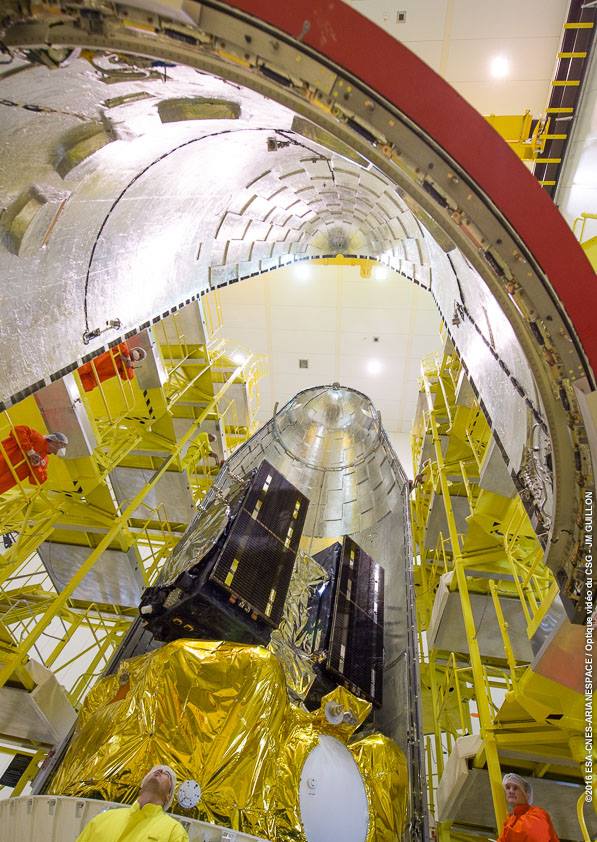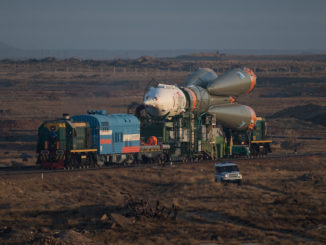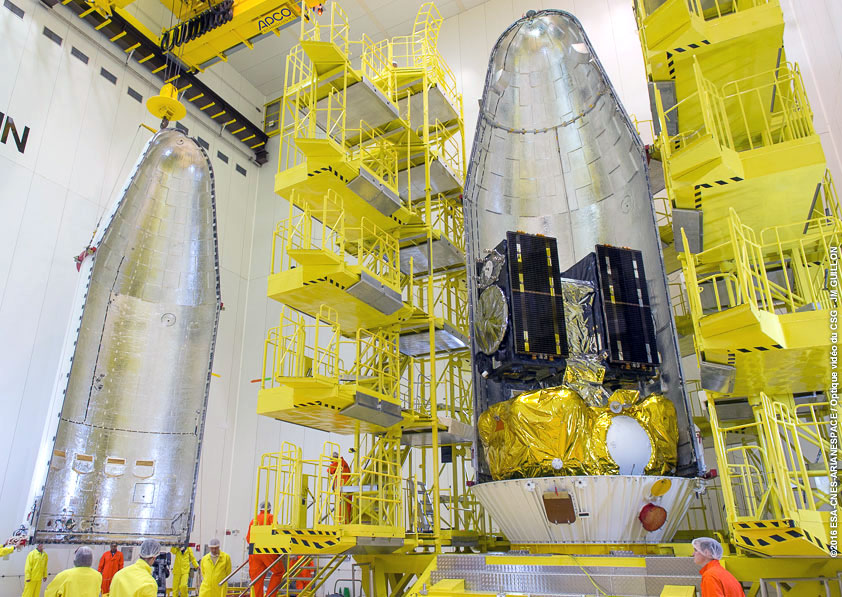
Europe’s nearly $8 billion Galileo navigation system, an analog to the U.S. GPS satellite network, is hitting a stride in production and launches, with another two spacecraft encapsulated Wednesday inside the fairing of a Soyuz rocket for liftoff next week.
The two navigation satellites will become the 13th and 14th operational Galileo craft launched since 2011. With a successful launch May 24, the Galileo system will have received six new satellites since September 2015.
Technicians at the European-run space center in French Guiana enclosed the Galileo satellites and their Russian-built Fregat space tug inside their aerodynamic shield Wednesday, a day after the satellites were mounted side-by-side atop the Fregat.
Workers then adorned the fairing with traditional decals.
A Russian Soyuz-2.1b rocket is scheduled to roll out of its MIK integration building at the Guiana Space Center on Friday for a nearly 700-meter (2,300-foot) trip to the launch pad.
Ground crews will move a mobile service structure around the Soyuz rocket later Friday to add the launcher’s upper composite, comprising the Galileo satellites, Fregat stage and payload fairing.
Each Galileo spacecraft weighs about 715 kilograms, or 1,576 pounds, with a full tank of propellant.
Liftoff is scheduled for Tuesday at 0848:43 GMT (4:48:43 a.m. EDT; 5:48:43 a.m. French Guiana time) at an instantaneous launch opportunity.
Built by OHB of Germany with navigation instrumentation from Britain’s Surrey Satellite Technology Ltd., the Galileo spacecraft will be deployed nearly four hours after launch by the Fregat upper stage in an orbit 23,522 kilometers (14,615 miles) above Earth at an inclination of 57.4 degrees.
Nicknamed Danielè and Alizée after children who won a painting competition organized by the European Commission in 2011, the satellites will use their own power to descend a few hundred kilometers to enter the operational Galileo fleet.
The Galileo network is funded by the European Commission, the EU’s executive body, and supported by the European Space Agency.
When complete in 2020, signals from the Galileo system and the U.S. Air Force’s next-generation GPS satellites will be fully compatible, giving users better positioning and timing accuracy and an independent backup navigation service.
Next week’s launch will be managed by Arianespace, and it comes less than a month after the last Soyuz flight from French Guiana. The launch will mark the 15th Soyuz mission from the jungle spaceport in South America since 2011.
The mission will be the fourth of 12 launches planned by Arianespace this year across its fleet of Ariane 5, Soyuz and Vega boosters.
More photos of the Galileo satellites’ encapsulation are posted below.
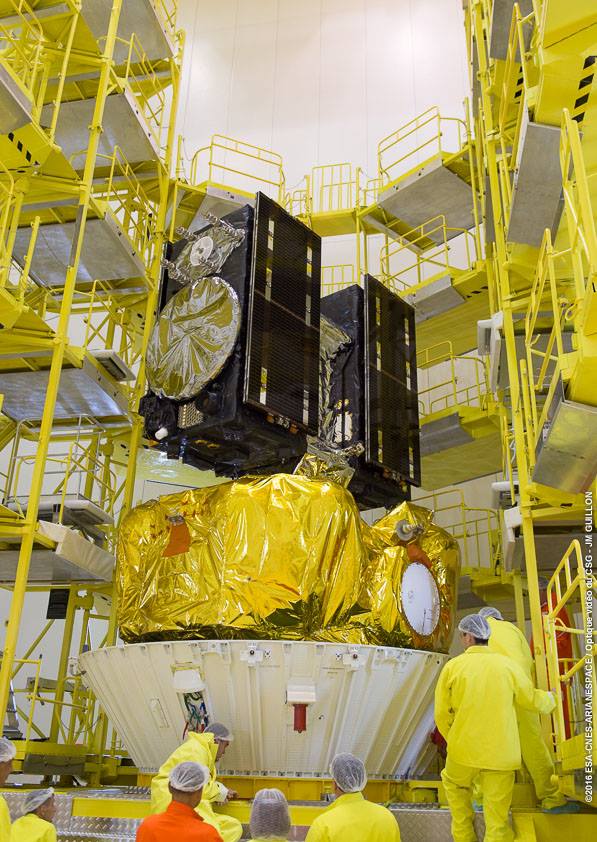
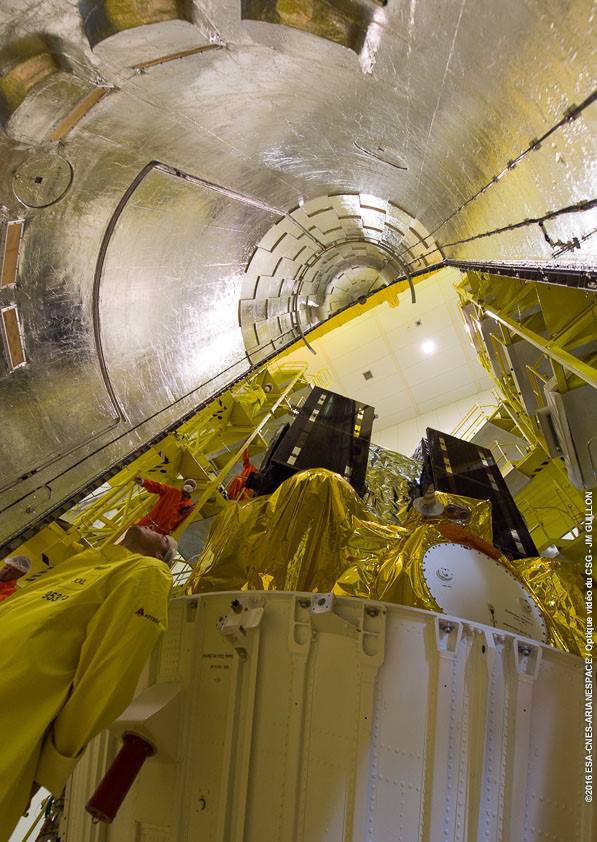
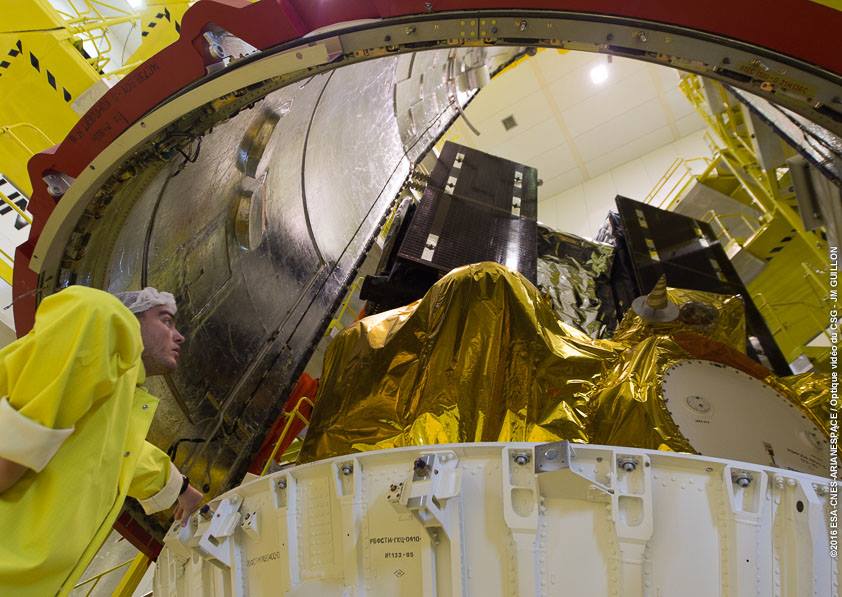
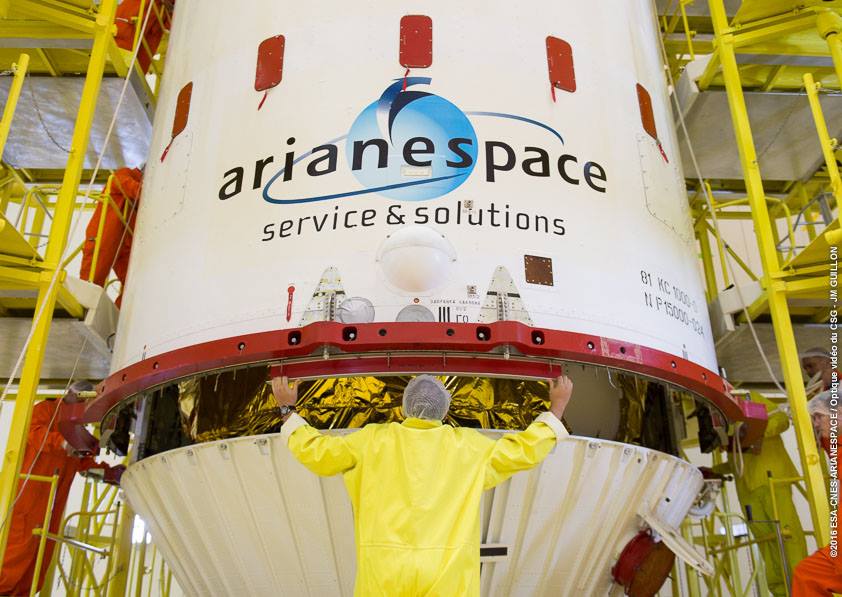
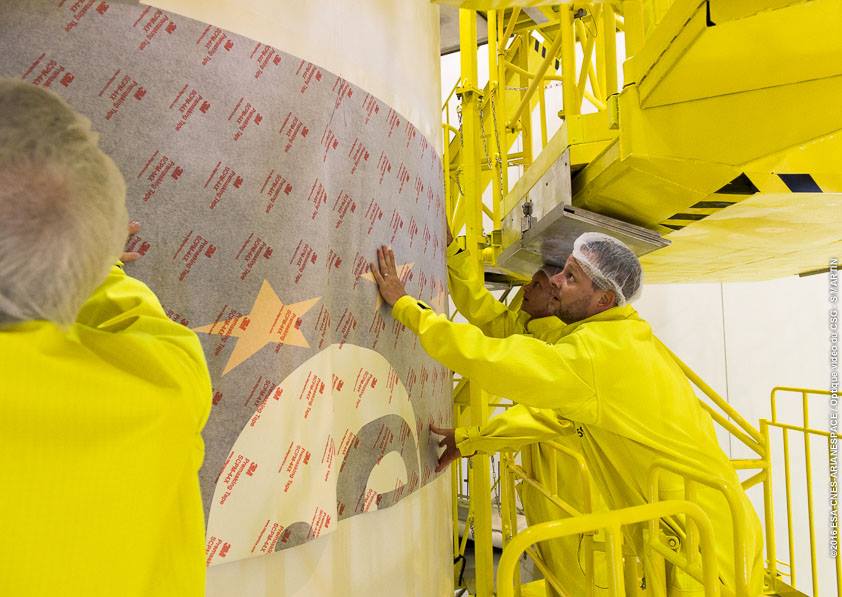
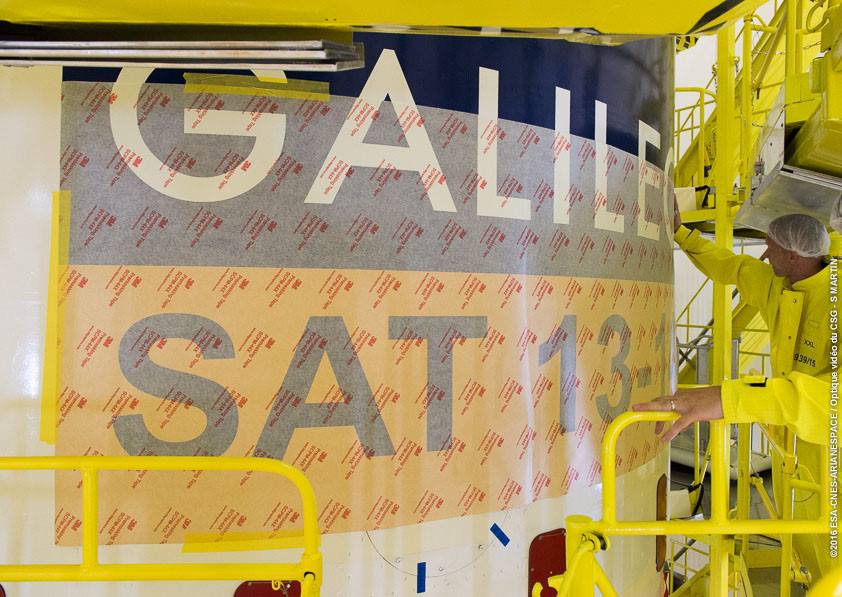

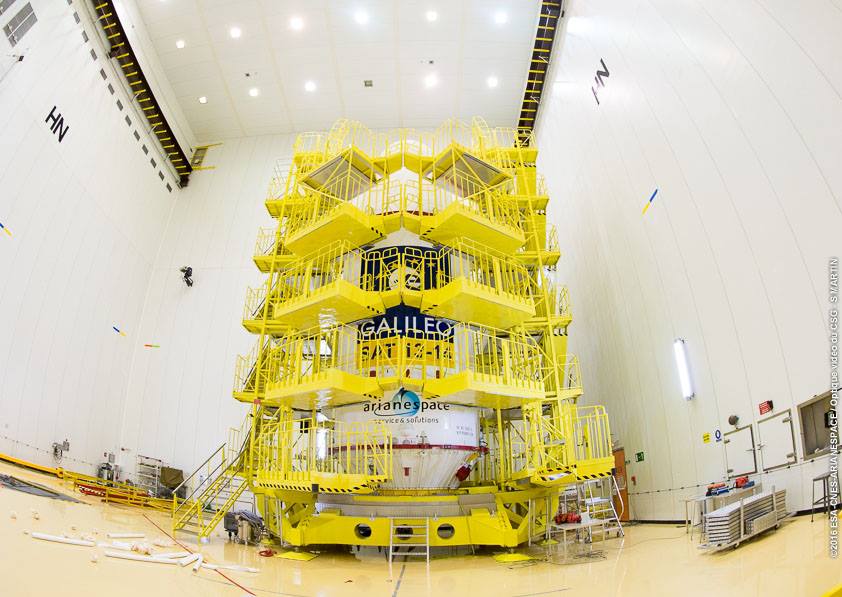
Email the author.
Follow Stephen Clark on Twitter: @StephenClark1.

